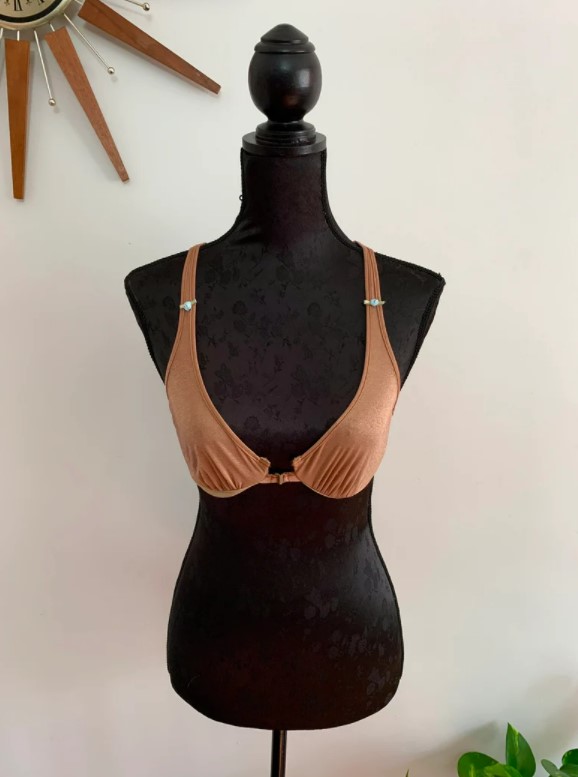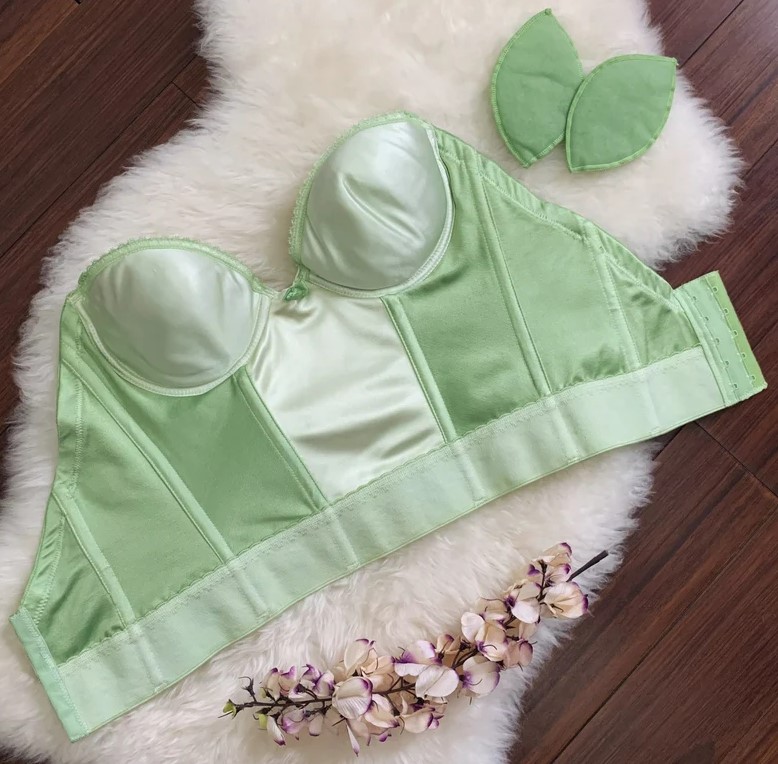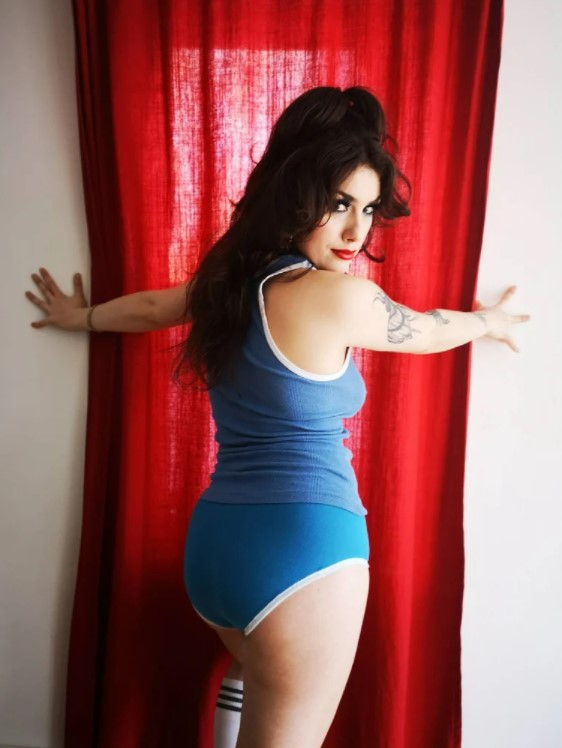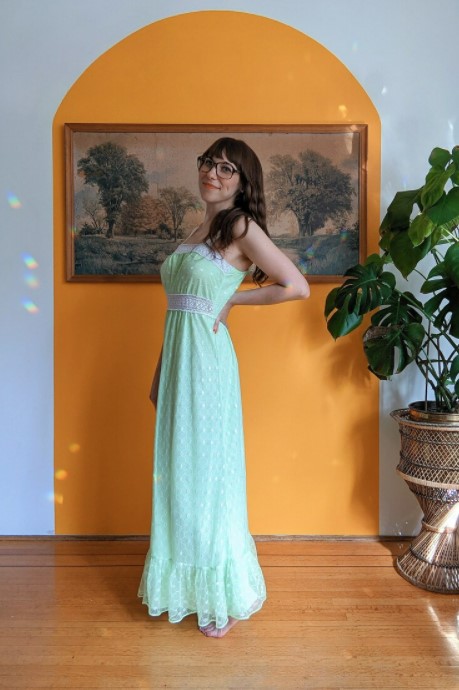Disclosure: This post may contain affiliate links. I receive a small commission at no cost to you when you make a purchase using my link.
Women in the ’70s were more free-spirited and more covered than in the sixties. Mini skirts and tight-fitted Twiggy-Esque dresses were replaced with long-legged jumpers, pantsuits, bell bottoms, and thigh-high boots. 1970s lingerie happened to go in the opposite direction. After all, the thong underwear was made in the 70s. However, not all innocence was lost. Shapewear was still important, pantyhose swept the nation, and almost everything had fringe and tassels.
With the help of accessible fashion catalogs like Sears, mail-order lingerie was at the fingertips of every household. This revolutionized how lingerie was marketed and purchased. This allowed for more marketing influence to take over. Lingerie was no longer a secretive or functional undergarment but a quintessential element of femininity and apparel.
1970s Bra Movement

For those who hadn’t burned their bra in the early ’70s during the feminine movement for undergarment freedom, was the nipple bra. You could still piss off the patriarchy while maintaining support for your bust.
The nipple bra is exactly how it sounds. Light material with sewn-on nipple pieces gave the illusion of a natural, bra-less look as the fake nipple pierced any top or blouse. Available in beige, white, or black, the nipple bra was well-received for a short period of time. In the ‘70s, nipples weren’t at all taboo as they are today and were considered a shapely part of the body much like the hips, butt, and waist.
But if you weren’t interested in the eye-catching undergarment, standard bras in the 1970s offered lightweight support. And thanks to nylon, there was plenty of room for movement. Minus the artificial nipples, the bra of the ‘70s closely resembles the modern, full coverage bra. However, there was no padding, cups were slightly more pointed, and cup sizes stopped at a C. Straps also became more versatile. They were made to be adjustable to the top you wore. The straps could be crisscrossed in the back or removed completely.

As seduction became the focal point in marketing 1970s lingerie, the quarter-cup bra took center stage. As it suggests, there was about a quarter of the material in the cup. Covering only the bottom portion of the breast. Supported by underwire, it appeared as if the breast just barely sits in the cup. Fringe, tassels, or extra detailing would usually rise up just enough to cover the nipple, but only barely. This quarter-cup design was used on upper corsets, gowns, and bodysuits.
Bra and panty sets were extremely popular. Matching colors, lace, and designs turned 1970s lingerie into a fashion statement and made undergarments more exciting than they’d ever been. The era that was trying to ditch bras and underwear were met face to face with this exciting venture in fashion, and despite the push back, 1970s lingerie won over the hearts of women nationwide.
Pantyhoes in the ’70s
The shapewear of the decade, hands-down, went to pantyhose. Introduced in the late ‘60s, pantyhose were now in the drawer of every lady of nearly every age and demographic. The high-waist and the snug band made for tummy control while the stalkings made legs appear silky smooth and kept silk and cotton clothing from clinging.
1970s Underwear

Underwear was finally fitted in the 70s. With more women wearing pants than ever before, loose bloomers were officially a thing of the past. High-waisted cuts made a return, and the granny panty still existed, but the underwear designs explored a brand new frontier. Thongs, mesh, and bikini cuts made their debut in the ‘70s and haven’t disappeared yet.
Because pants became more prominent, bulky underwear got in the way and created awkward lines in the clothing. Underwear in the ‘70s was about covering the essential private areas with as little material as possible. Underwear was also more sexualized now than ever before which inspired designers to get extra creative with cuts, styles, patterns, and material.
Thongs were created to reduce the appearance of lines in the clothing of models but soon became a proclamation of sexiness and style. For a more modest but modern look, were panties that had light, see-through mesh, often matching a bra with the same peek-a-boo design. Silky briefs weren’t as popular but were still being sold in catalogs. They resembled briefs of the ’60s but were tailored more like loose-fitting shorts. The bottom hem fell loosely on the upper thigh as opposed to being fitted against the leg.
1970s Nightwear

Fashion designer Rudy Gernreigh designed the first-ever thong bodysuit in 1974. Iconic models Lisa Taylor and Jerry Hall were photographed in the signature one-piece making it an even more appealing piece of women’s underwear in the ‘70s.
Long silky nightgowns came in patterned print, but what appealed to the younger generations were the single-toned gowns (often in a bright color), that had a dramatic slit on one of both sides. Finished with black lace, a halter top, and bows–these fabulous french-inspired silk gowns were all the rage. Other detailing included silk belts or lace chokers.
Floor-length gowns were also offered completely sheer with bows and lace to cover certain areas. Oftentimes these would be sold by themselves or with a matching bra-panty set. Later in the decade, girdles came back. A lot less for their functionality but their vintage sex appeal.
1970s Lingerie Styles & Trends
Bodysuits, barely-there-underwear, and the nipple bra–needless to say the ’70s were a colorful and creative time for lingerie. The classics were refined and new, innovative style made the underwear exciting. Over the decades, we see lingerie transform from functionality and discomfort that can be seen in heavily boned corsets and ill-fitting bras to sexiness, self-expression, and support. This evolution is most distinctly demonstrated in the ’70s.
With more patterns, styles, shapes, and sizes than ever before, 1970s lingerie allowed you to officially make a fashion statement with your undergarments. And boy, did they ever.




Leave a Reply